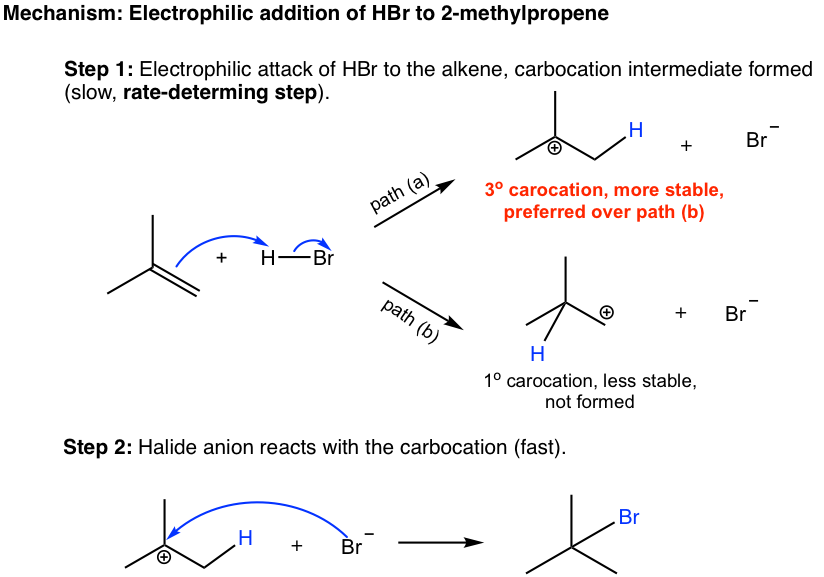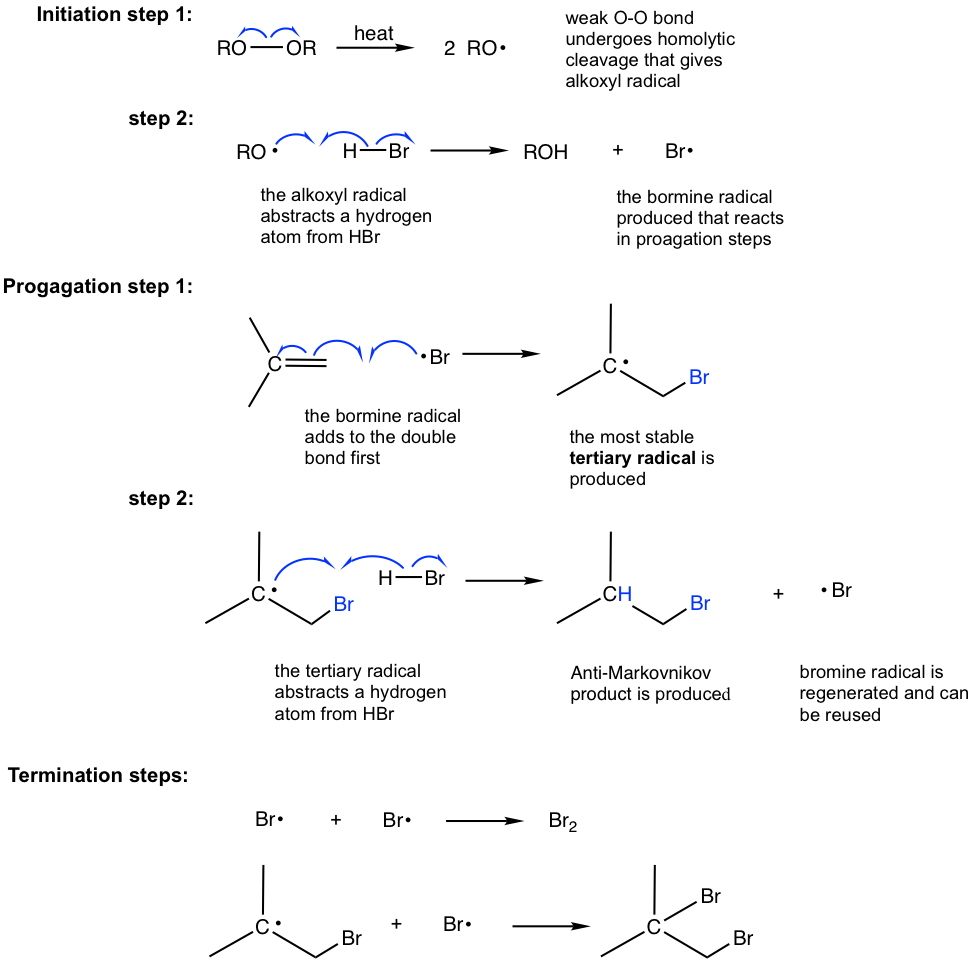A migratory insertion is a type of reaction in organometallic chemistry wherein two ligands on a metal complex combine. From alkenes i By acid catalysed hydration.

Electrophilic Addition Of Hydrogen Halides Chemistry Libretexts
You will find it - Its all here.

. Basically it follows a 3-step mechanism. C 4 H 8. This is mainly due to the self-bonding or catenation of carbon that prevents the complete saturation of the hydrocarbon by the formation of double or triple bonds.
Drawing alkene formulas from names. Given that i Ni0 complexes undergo oxidative addition more readily than NiI complexes with aryl halides and ii NiII complexes are believed to rapidly engage with sp 3 carbon-centered radicals to form NiIII species enabling sp 3 sp 2 and sp 3 sp 3 CC bond formations 15 16 we favor the dual-catalysis mechanism outlined in Fig. Drawing alkyne formulas from names.
In case of unsymmetrical alkenes the addition reaction takes place in accordance with Markovnikovs rule Unit 13 Class XI. The S N 2 doesnt happen for secondary alcohols. Our catalyst development efforts are often paired with industrial partners as our catalysts find.
In four textbooks where SOCl 2 is mentioned the reaction is shown as proceeding through an S N 2 mechanism. It is a subset of reactions that very closely resembles the insertion reactions and both are differentiated by the mechanism that leads to the resulting stereochemistry of the products. Mechanism of Dehydration of Alcohols.
In each case the base metal catalysts offer unique function over established precious metals catalysts. The following Diels-Alder cycloaddition was recently performed by Mukherjee et al. Dehydration of alcohols follows the E1 or E2 mechanism.
Drawing formulas from names. Because the hydrogen is absorbed on the catalyst surface. Both steps in the above addition follow the Markovnikov rule.
A recent application is the generation of highly reactive aryl radicals which are useful arylating reagents in synthesis by photoinduced electron transfer PET from photoredox catalysts to suitable precursors followed by bond scission 8 9However the choice of aryl radical precursors is currently limited to electron-poor arenes such as diazonium 6 10 or. Drawing formulas from names. C 5 H 10.
If its not in the textbook chances are it. C 2 H 4. Visit Friedel Crafts Reaction for an in-depth explanation of the reaction details and mechanism.
C 3 H 6. Drawing formulas from names. Thus the carbonyl carbon and the three atoms attached to it lie in the same plane and the π-electron cloud is above and below this plane.
Alkenes having four or more carbon atoms can form diverse structural isomersMost alkenes are also isomers of cycloalkanesAcyclic alkene structural isomers with only one double bond follow. For instance alkanes alkynes or alkenes the amount of bonded hydrogen decreases in alkenes and alkynes. In addition the oxygen atom also has two non bonding electron pairs.
The mechanism of alkyne hydrogenation is identical to that of the alkenes. The Gabriel synthesis is a chemical reaction used to obtain primary amines from primary alkyl halides. Hydrogen halides react with alkynes in the same manner as they do with alkenes.
Theres no warning sign saying wait. Alkenes react with water in the presence of acid as catalyst to form alcohols. However often the two are used interchangeably because the.
Organic Chemistry Study Materials Practice Problems Summary Sheet Guides Multiple-Choice Quizzes. The bond angles are approximately 120 as expected of a trigonal coplanar structure Figure 121. 1-butene 2-butene and isobutylene.
Matching alcohols to their names I. Formation of alkenes. As shown in the following figure a hydrogen ion catalyzes the Markovnikovs addition.
Similarly groups that favor ionization of the halogen may generate a transition state with substantial positive charge on the alpha-carbon and only a small degree of CH breaking. This concept of redox active ligands has resulted in new base metal catalysts for the asymmetric hydrogenation of alkenes as well as the hydrosilylation and hydroboration of olefins. The ability of hydrocarbons to bond to themselves is known as catenation.
For example if the Rgroups on the beta-carbon enhance the acidity of that hydrogen then substantial breaking of CH may occur before the other bonds begin to be affected. The elements of water can be added to the doublebonded carbons of an alkene in either a Markovnikovs or an antiMarkovnikovs manner. The primary alcohols elimination reactions follow the E2 mechanism whereas the secondary and tertiary alcohols elimination reaction follows the E1 mechanism.
CHCl COEt ACN CoEt AcOEt CN -78C 8h 25 75 When cyclopentadiene is added in excess the reaction is pseudo-1 order with respect to. Mechanism The mechanism of the reaction involves the following three steps. For most simple alkyl.
The steps that are involved. The antiMarkovnikovs addition results from a hydroborationoxidation reaction. Gabriel Phthalimide Synthesis was discovered by a German chemist named Siegmund Gabriel.
Only one textbook in this admittedly incomplete sample mentions the S N i mechanism at all. 1212 Structure of the Carbonyl. Thus the addition of hydrogen bromide to 1butyne gives 2bromo1butene as the.
Drawing alcohol formulas.

10 2 Reactions Of Alkenes Addition Of Hydrogen Halide To Alkenes Organic Chemistry I

9 2 Addition Of Hydrogen Halides To Symmetrical Alkenes Chemistry Libretexts

Electrophilic Addition Of Hydrogen Halides To Alkenes Youtube

10 2 Reactions Of Alkenes Addition Of Hydrogen Halide To Alkenes Organic Chemistry I
0 Comments